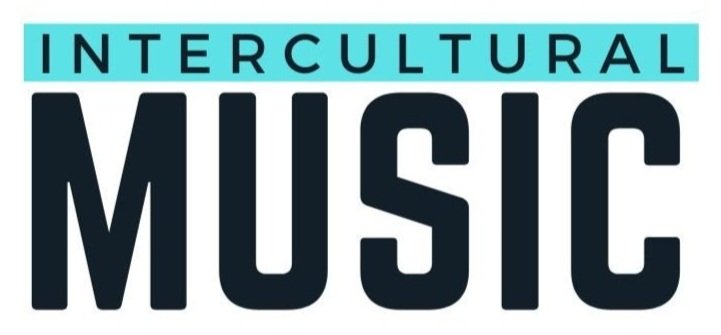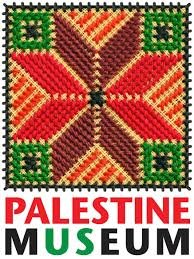From Palestine: Our Past, Our Future
The opening ceremony event on May 20 will include a music performance by Ronnie Malley (Oud and Vocals—Palestinian music).
Palestine Museum US announces participation in European Cultural Centre (ECC) Venice Biennial Architecture Exhibition: Time Space Existence. The exhibit is one of 192 presented by ECC at three venues in Venice. Occupying 150 square meters of historic Palazzo Mora, it is the largest exhibit in the building.
The exhibit focuses on 1948 when Israel was created on May 15 as the culmination of a 50-year settler colonial project to establish an exclusive Zionist Jewish state in Palestine and expell its non-Jewish population. The Zionist forces in Palestine launched a military campaign implementing a pre-planned strategy to depopulate and destroy Palestinian towns and villages. Over 200 villages were depopulated by the time the State of Israel was declared. By the end of 1948, 500 villages were depopulated and many of which were destroyed to prevent the return of their inhabitants. About 800,000 Palestinians were driven from their homes and exiled to refugee camps which still exist today in the West Bank, Gaza, Jordan, Syria, and Lebanon. Israel changed the names of Palestinian towns and villages, in some cases covered the ruins with invasive tree species and changed the history books to erase any reference to Palestine or Palestinians.
“This exhibit shines a light on what Israel did in 1948 that most people of the world are not aware of,” says Faisal Saleh, founder and director of the Palestine Museum US and chief curator of the exhibit. “We hope to identify all the villages that were erased and unearth the truth that was buried by Israel,” he continues.
The works of 19, mostly Palestinian artists and architects along with four faculty-advised teams of architectural students, are featured in several groups including, animated maps, virtual reality displays of reconstructed destroyed Palestinian villages, architectural student projects re-imagining four lost villages, artwork, photography, and textiles.
An animated map of 1948 Palestine shows the timeline of village depopulation and destruction. Over a 10-minute span, viewers watch chronologically as the area of each village lights up on the map in one of three colors depending on the method of depopulation initialy used by the Zionist forces and later the Israeli military. One color identifies the 36 villages that experienced massacres, other villages where the population was terrorized (psychological warfare) into panic and fled with their children fearing for their lives, and the third color signifies evictions by force at gunpoint. Palestinian refugees and their descendants (who now count in the millions) can watch the name of their village come up on the date it was taken down. “This will bring to life what exactly happened in 1948 and clearly debunk Ben-Gurion’s (first Israeli prime minister) prediction and myth of the old dying and the young forgetting,” Saleh emphasizes.
Four virtual reality videos simulate re-created villages and neighborhoods developed from archival photographs and maps. Eight video display monitors are used to showcase high-tech exhibits and student village projects.
Half the floor of the exhibit hall is substantially covered by a seven-meter-long walk-on map of 1948 Palestine. In the other half, a two-meter (diameter) disc holding a collage of 1,000 photographs from the Great March of Return (Gaza 2018-2019) will rotate once every minute.
Four historic B&W and four current color photographs feature Palestinians and Palestinian refugee camps in Gaza, West Bank, Syria, and Lebanon.
Artwork of different genres representing Nakba sentiments and a future free Palestine is showcased. Colorful painted and embroidered banners hang from the ceiling.
Participating artists and architects
Salman Abu Sitta, Ghassan Abu Laban, Alaa Albaba, Tala Alfoqaha, Nabil Anani, Samira Badran, Shaima’ Farouki, Jørgen Grinde, Hanin Haydar, Jacqueline Béjani, Samia Halaby, John Halakah, Margaret Olin, Sobhiya Hasan Qais, Taqi Spateen, Steve-Sabella, Zain Al Sharaf Wahbeh, Nisreen Zahda, Ola Zareini.
Featured student village projects
Qula (Architect Arwa Qalalwa) / Saffuriyya (Nayrouz Ali) / Suba (Majd Jahshan, Donia Alsalman, and Sajeda Alnaqrooz) / Suhmata (Maha Mansour, Alaa Hammad, and Asma Al Saqqa).
Press contacts: Faisal Saleh +1 203 530-2248 Faisal.Saleh [at] PalestineMuseum.US.
Press preview: May 19, 11-3pm
The opening ceremony event on May 20 will include a music performance by Ronnie Malley (Oud and Vocals—Palestinian music).
This Event takes place in Venice, Italy. Start time is 18:30 local time - End time is 21:00 Italy time.
Event Program
Keynote Address by Faisal Saleh, Exhibit Curator and Exec Dir of Palestine Museum US (English & Italian)
Presentation of Nakba animated map and virtual reality recreation of Palestinian Villages
Music Concert by Palestinian Musician Ronnie Malley (Oud & Vocals - Palestinian Music)
Directions to the Event: Take Vaporetto Line 1 to Ca' D'Oro Stop, take alley then at turn left past Mac Donald's. Palazzo Mora is on the right after the first bridge.
Italian Version
Questo evento si svolge a Venezia, Italia, dalle 18.30 alle 21.00 ora italiana.
Cerimonia di apertura della mostra proposta dal Palestine Museum US “From Palestine: Our Past, Our Future”.
Programma dell'evento
Discorso di apertura di Faisal Saleh, curatore della mostra e direttore esecutivo del Palestine Museum US (inglese e italiano)
Presentazione della mappa animata della Nakba e ricostruzione virtuale dei villaggi palestinesi
Concerto del musicista palestinese Ronnie Malley (Oud e voce - musica palestinese)
Indicazioni per l'evento: prendere il vaporetto linea 1 fino alla fermata Ca' D'Oro, imboccare il vicolo e poi dirigersi a sinistra oltre Mac Donald's. Palazzo Mora si trova sulla destra dopo il primo ponte.


